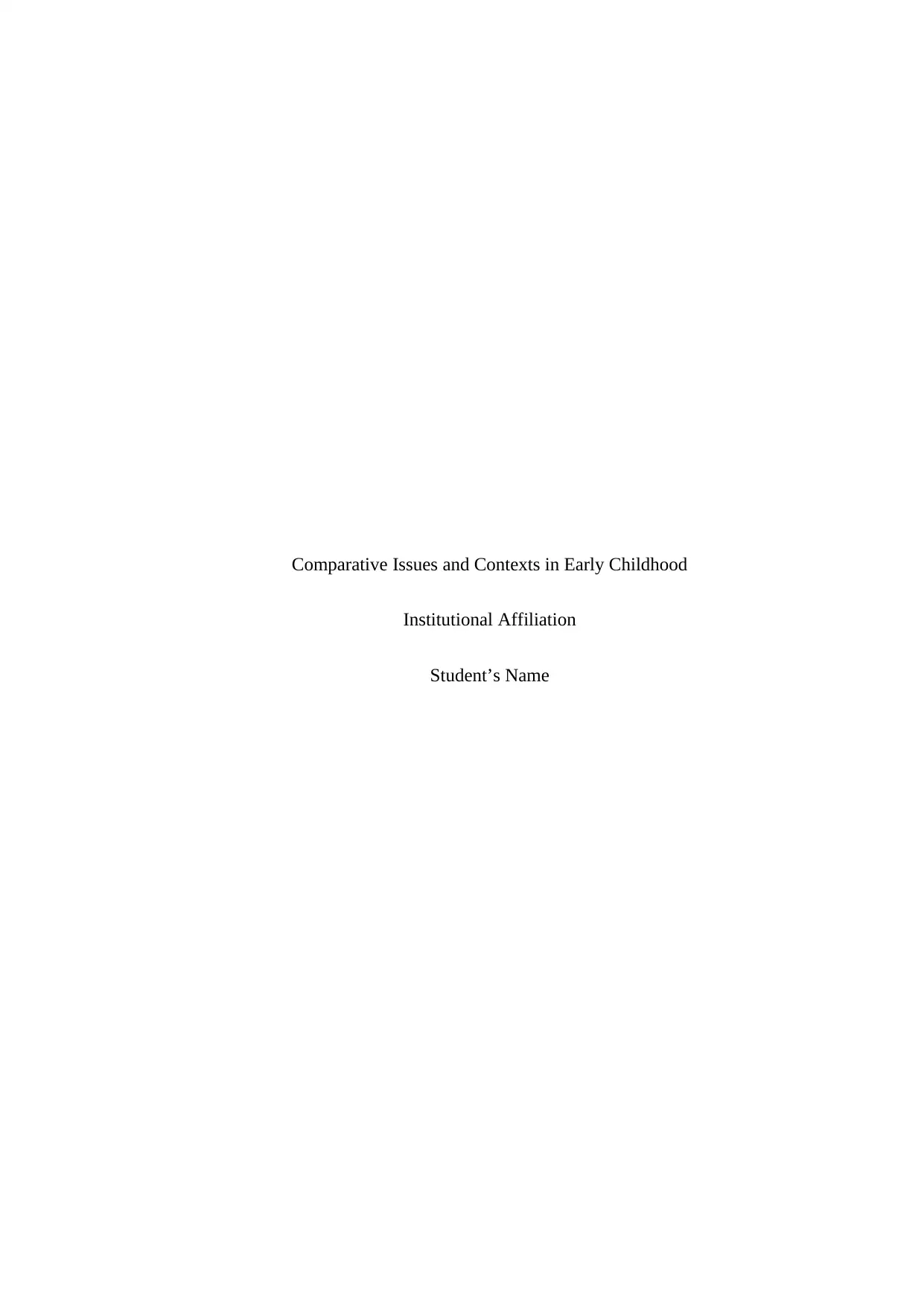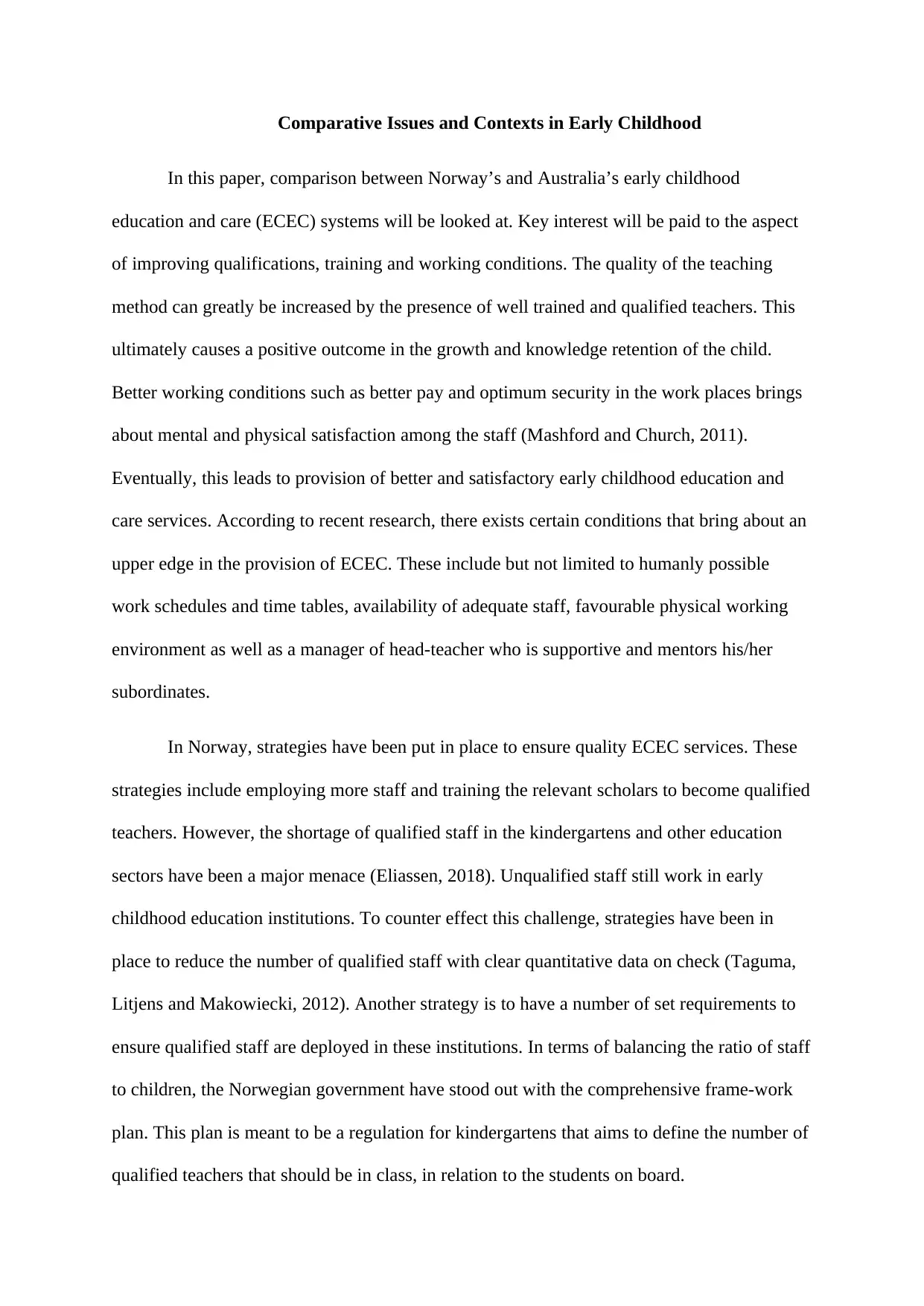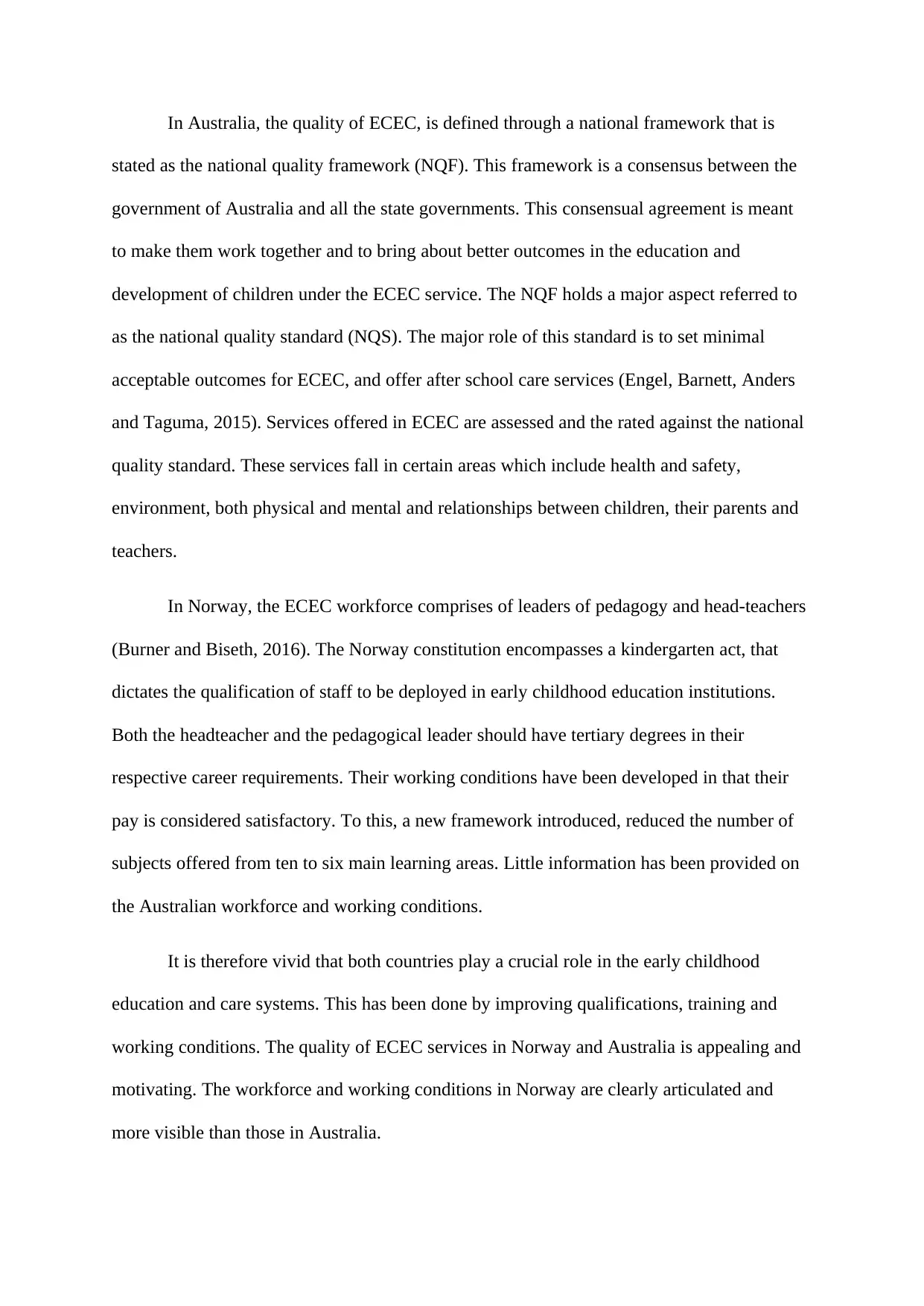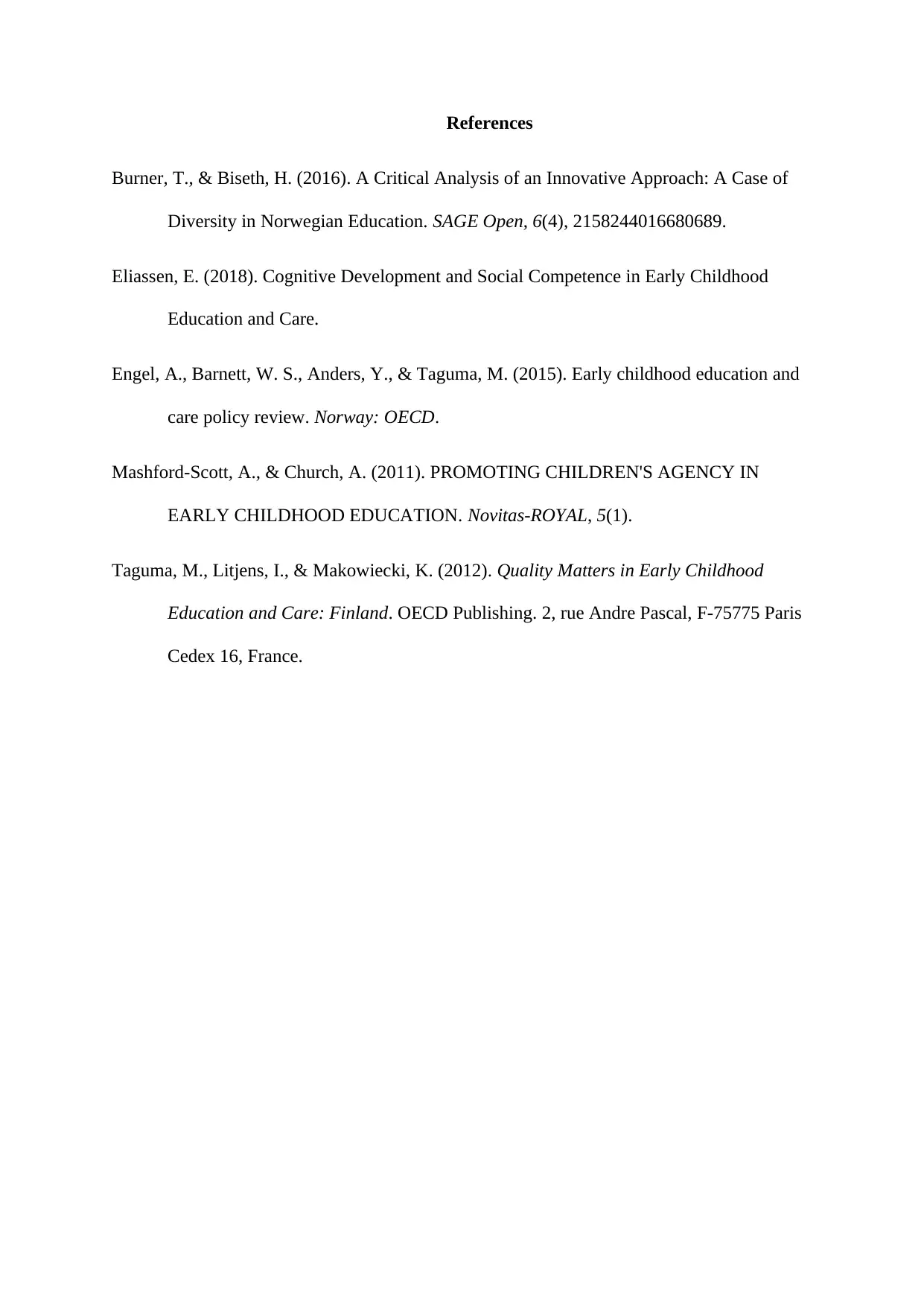Comparative Issues in Early Childhood Education: Norway and Australia
VerifiedAdded on 2022/10/10
|4
|884
|304
Essay
AI Summary
This paper offers a comparative analysis of the early childhood education and care (ECEC) systems in Norway and Australia. It examines the strategies implemented by both countries to improve the quality of ECEC, with a particular focus on teacher qualifications, training, and working conditions. The paper highlights Norway's efforts to address staff shortages through training and quantitative data-driven approaches, as well as its framework plan for staff-to-child ratios. In contrast, it discusses Australia's National Quality Framework (NQF) and National Quality Standard (NQS) which sets minimum standards for ECEC services. The essay emphasizes the importance of qualified teachers and favorable working conditions in delivering effective ECEC services. The paper concludes that both countries play a crucial role in improving ECEC, with Norway's workforce and working conditions being more clearly defined than Australia's.
1 out of 4











![[object Object]](/_next/static/media/star-bottom.7253800d.svg)